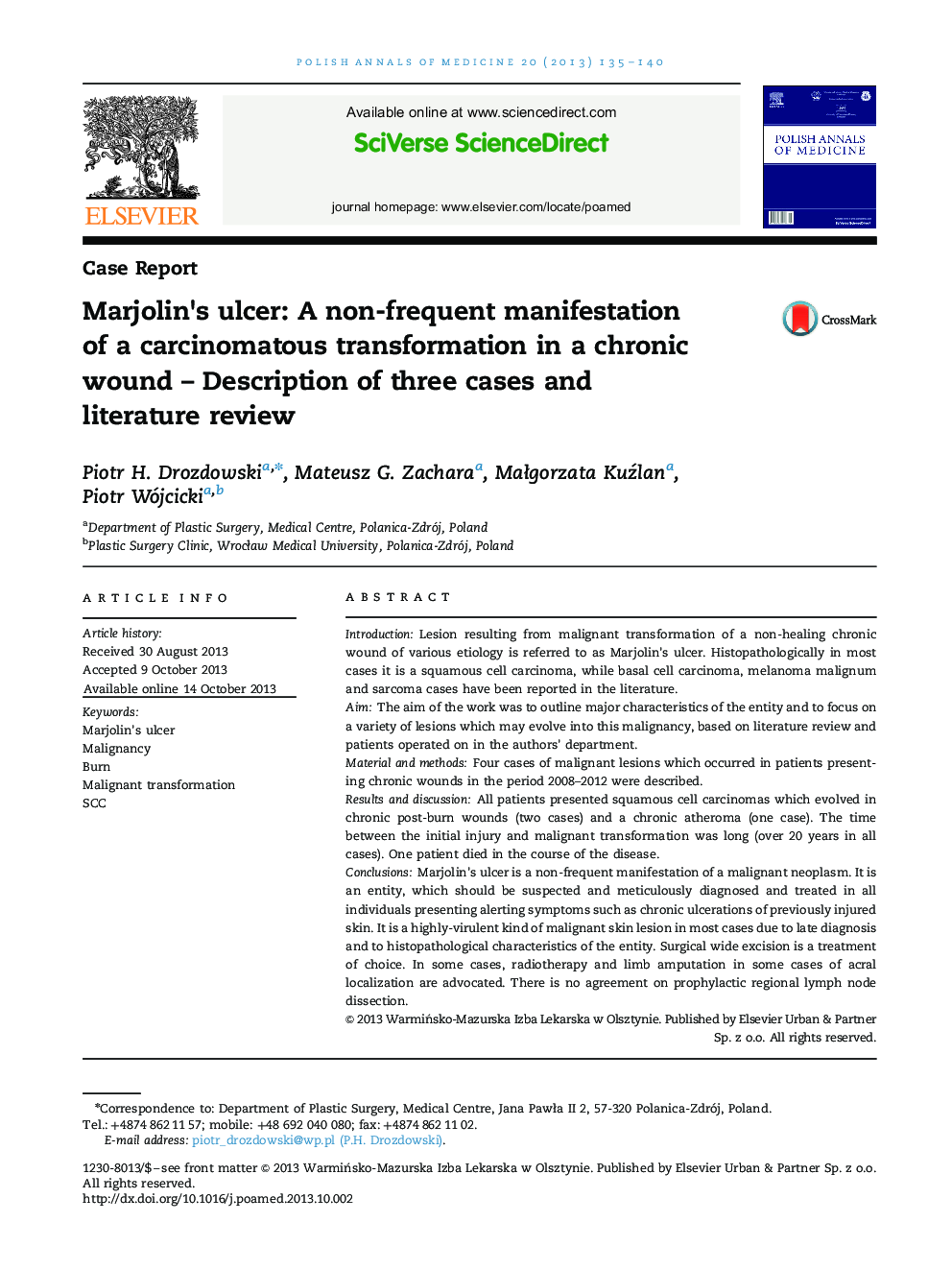| Article ID | Journal | Published Year | Pages | File Type |
|---|---|---|---|---|
| 2678683 | Polish Annals of Medicine | 2013 | 6 Pages |
IntroductionLesion resulting from malignant transformation of a non-healing chronic wound of various etiology is referred to as Marjolin's ulcer. Histopathologically in most cases it is a squamous cell carcinoma, while basal cell carcinoma, melanoma malignum and sarcoma cases have been reported in the literature.AimThe aim of the work was to outline major characteristics of the entity and to focus on a variety of lesions which may evolve into this malignancy, based on literature review and patients operated on in the authors' department.Material and methodsFour cases of malignant lesions which occurred in patients presenting chronic wounds in the period 2008–2012 were described.Results and discussionAll patients presented squamous cell carcinomas which evolved in chronic post-burn wounds (two cases) and a chronic atheroma (one case). The time between the initial injury and malignant transformation was long (over 20 years in all cases). One patient died in the course of the disease.ConclusionsMarjolin's ulcer is a non-frequent manifestation of a malignant neoplasm. It is an entity, which should be suspected and meticulously diagnosed and treated in all individuals presenting alerting symptoms such as chronic ulcerations of previously injured skin. It is a highly-virulent kind of malignant skin lesion in most cases due to late diagnosis and to histopathological characteristics of the entity. Surgical wide excision is a treatment of choice. In some cases, radiotherapy and limb amputation in some cases of acral localization are advocated. There is no agreement on prophylactic regional lymph node dissection.
